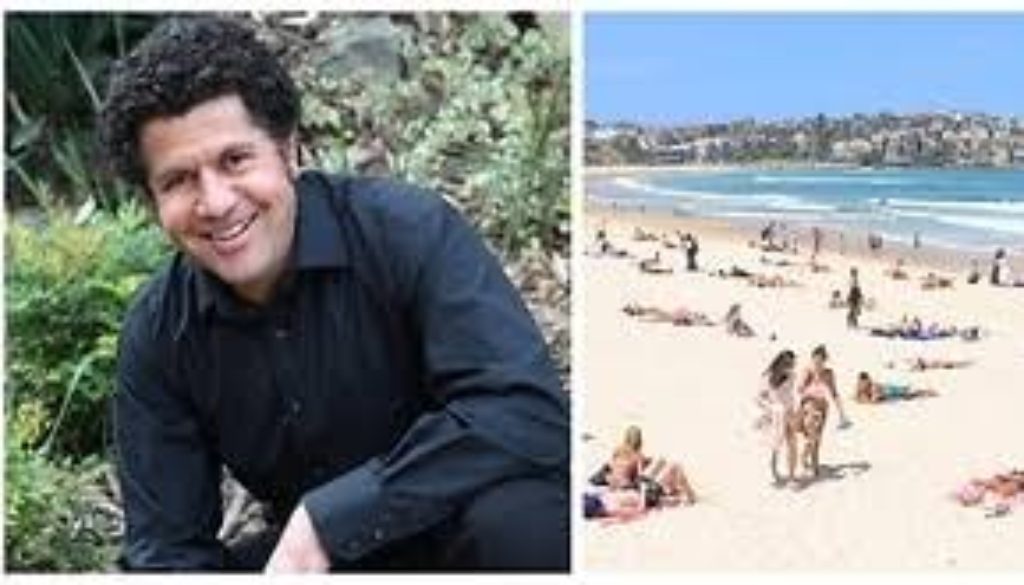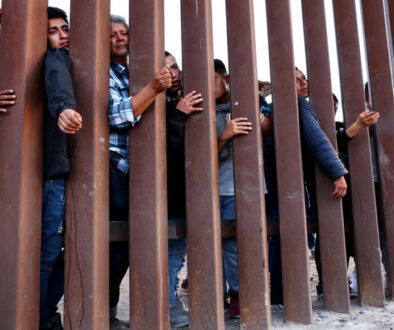New South Wales: Health modelling by a Cypriot saved thousands

Health modelling and, generally, mathematical modelling, was not something I knew much about before I heard Yalchin Oytam’s achievement. Once I became aware that “something happened”, I asked him to send me some details. He sent me a text. I sat on it for several days searching on the Web trying to understand what it is and what it does.
Yalchin Oytam has been my friend for at least a few years. He occasionally posts lovely poems on Facebook. He is very humorous, kind hearted and very modest. He never boasts. I never really knew what he does. Except that one day he wrote to me that he was “over the moon” because “his model had just been reviewed by the federal science agency” and that “the comment was that it is the most sophisticated model in Australia at the moment!” That event made me aware.
Yalchin Oytam emigrated to Australia from Morphou at the age of 16. Now he is the Manager of Data Analytics at the Ministry of Health of New South Wales (NSW), Australia. He has a Doctor of Philosophy (PhD) degree in Neuroengineering, Systems and Control, Behavioural Neuroscience, from the University of New South Wales, and a Bachelor of Engineering (Hons) degree in Electrical, Electronics and Communications Engineering, from the same university. In Cyprus, he wemt to Turk Maarif Koleji.
New South Wales is a state on the east coast of Australia with a population of over 8 million (almost the size of Greece). Yalchin Oytam’s health modelling work has probably saved the lives of thousands of people. In the text that follows he gives details of his achievement and, also, expresses the hope that one day he will have the chance to do something similar “for all Cyprus”.
1. Health Modelling
Health modelling is a mathematical tool, which based on (1) real patient health records (or demographics), (2) measurable indicators of social interaction, (3) and Risk factors known to be associated with COVID19, can tell us how many patients will need hospitalization and when, and how many people will need ICU beds and when.
The model can predict the spread of the disease based on the changing social distancing interventions. Rather than making assumptions, the model uses data from social sciences which shows how much contact people have across age groups and in different settings – home, work, school, childcare, university, general social contact (weekends, socializing).
The end result of all this is that the model tells the hospital system how many beds they will need and when, as the epidemic progresses, and it tells the policy makers what social distancing rules they can relax (for economic reasons) without the disease getting out of control.
2. Results so far
About 6 weeks ago, New South Wales was tracking France and UK with a one-week delay. Based on the projections of the model, the government imposed strict distancing rules. In contrast to UK and France, infection rates have been in decline in NSW since the beginning of April, and there has been a total of 35 deaths, with less than 150 patients in all hospitals combined at any given time. Compared to the UK and France experience, so far this is a resounding success.
The model is flexible and can be adapted to any country – and of course, I would like to develop something similar to help Cyprus (all of the island!) manage COVID-19 while enabling as much economic activity as possible.
3. Easing Restrictions
Managing an epidemic has two major competing objectives. The first and most important is protecting human lives and making sure that the disease does not get out of control.
The second is being able to allow social activity associated with economic production which sustains society.
Cyprus as a whole has done really well in controlling the epidemic. According to publications Cyprus stands to lose the least number of lives per capita in Europe. Additionally, the situation in Cyprus is starkly different to what happened elsewhere in our region, such as Turkey and Iran.
It is now understandable that there is talk of restrictions, to benefit the economy. However, as the Spanish Flu epidemic taught us a hundred years ago, easing restrictions is risky and demands utmost attention. The health model I have built can be extremely useful here, as it can be used to predict transmission rates corresponding to different scenarios of eased restrictions.
These scenarios could relate to resuming activity in certain economic sectors, i.e. people returning to work in a particular industry, or to general mobility in society such as resuming schools, or easing travel restrictions. It can also account for the impact of case tracking and contact isolation if such measures are implemented.
Combined with ongoing testing, the model can play a crucial role in managing COVID-19 while allowing economic activity to take place.
4. Estimates from now on
Whether NSW or Cyprus, if current social distancing conditions are maintained, the disease will continue to be in decay mode – it will not increase but decrease in terms of active cases.
The challenge is to prevent the disease from spreading when economic activity is increased.
5. Checkpoint and coordinated action in Cyprus.
COVID-19 did not enter either side of Cyprus through checkpoints, but via airports with people travelling from overseas.
Out of a calamity like COVID-19, one hopes that we learn important lessons that can make life better, moving forward. For us, the lesson is that Cyprus is one, and we face risks and opportunities together. It would serve the island best to cooperate in the fight against COVID-19, but also in the revival of the economy. A positive political side effect of this is that when we work together, we are better able to overcome our old disease – ethnic tribalism that has plagued our country – and move towards a peaceful and prosperous future.
So far, the quality of political leadership has been a critical determinant in how much countries across the globe have suffered from COVID-19. We would do well to keep this in our minds.


